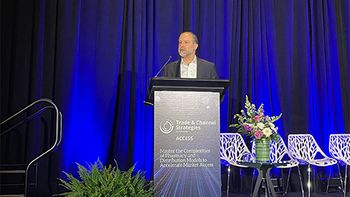
- Pharmaceutical Commerce - April 2009
Riding the Biotech Financing Rollercoaster
Ernst & Young’s latest industry report assesses the grim prospects
THE ANNUAL BEYOND BORDERS: Global Biotechnology Report from Ernst &Young’s Global Biotechnology Center (GBC; Cambridge, MA) pulls together perspectives from around the world on how the industry is performing for patients, business partners and—most critically—for investors. This year’s report highlights a new milestone—that in calendar year 2008, the industry was profitable (in the US only—by $400 million) for the first time in its 30-some-year history. (The global figure was a $1.4-billion loss.)
But that’s already a bittersweet memory, because the industry is suffering through what may become one of its worst downturns ever. “The first thing to say about this is, of course, the biotech industry has experienced downturns before,” says Glen Giovannetti, head of the GBC (see chart). “The big difference, though, is that in past times, the downturn was because of investor sentiment about the biotechnology sector. This time, nearly all capital markets are experiencing a severe downturn. It gives biotech very few options for sources of capital.”
These include all of the traditional sources of capital for the industry: venture capital and hedge funds, debt financing and going public with an IPO. The IPO “window” is essentially closed; VC firms are salving their wounds and have limited access to fresh capital; and banks, the source of financing, are treading very carefully to nurse themselves back to health (with generous dollops of government funds). The Obama stimulus package passed in January contains “a few hundred million” that could arguably be beneficial to biotech, but it leaves an enormous shortfall for companies that are burning through their cash.
“At this point, 44% of the biotech industry has less than one year of cash at hand,” concludes Giovannetti. “There is going to be a painful contraction.” (The GBC report points out, however, that roughly 25% of the industry has less than a year of cash even in good times; many of those companies were able to find additional sources of capital to keep going.)
Big Pharma to the rescue—not
Although selling out in some fashion to pharma companies has been a customary option for biotech, the ongoing realignments of the industry will not make it a ready source of support. The mega-mergers of Pfizer and Wyeth, Merck and Schering Plough, and possibly more in the pipeline, limit the resources and management attention that Big Pharma can devote to smaller biotech companies.
One possible bright spot in this regard, says the GBC report, is a new company called Enlight Biosciences, established last year by Pure Tech Ventures, a Boston VC firm. Enlight invests in “platform” technologies (in drug discovery, imaging, drug safety or others), with funding coming from, and access provided to, multiple pharma companies. The collaboration could speed up the rate at which innovative technologies become useful in the drug-development process, potentially shortening the development cycle, and making all aspects of the commercialization process work better. Enlight has some $65 million in financing to date.
Overall, says Giovannetti, the biotech industry may need to find new business models that update the process of a “relay race” of early, mid- and late-stage investors (see also p. 7). One option is to enter into acquisitions with “earn-out” clauses (whereby the acquired biotech still has an independent financial incentive to succeed)—which the GBC report calls an “unprecedented” development. While no one is predicting an end to biotech investment, the next few years are going to be a difficult march for the industry. PC
Articles in this issue
over 16 years ago
Returns Process Proves Presence of Counterfeits in US Supply Chainover 16 years ago
ClearOrbit Rolls Up More Supply Chain IT Processesover 16 years ago
Automating the Business-Development Processover 16 years ago
SAP and Teradata Partner on Data Warehousingover 16 years ago
Supply Chain Planning Takes on An International Flavorover 16 years ago
Global Pharma Sales Growth Will Flatten to 2.5-3.5% in 2009over 16 years ago
Rx-to-OTC Switch Market Will Double Its Recent Growth Rateover 16 years ago
Drug Wholesalers and the Generic Price Warover 16 years ago
Reshaping Biotechnology's Financing Relay RaceNewsletter
Stay ahead in the life sciences industry with Pharmaceutical Commerce, the latest news, trends, and strategies in drug distribution, commercialization, and market access.





